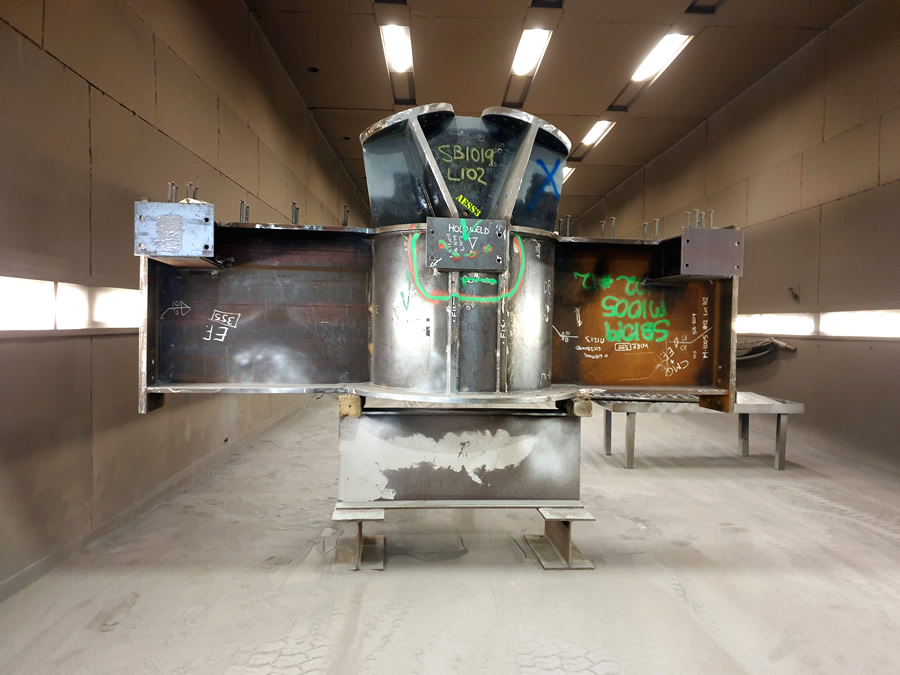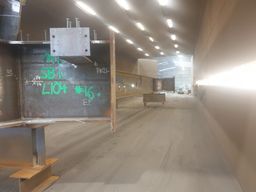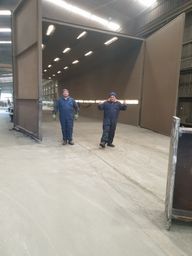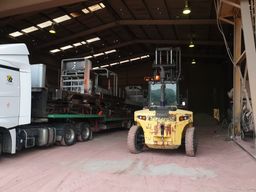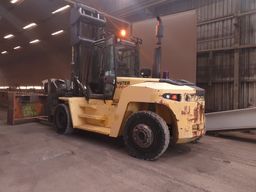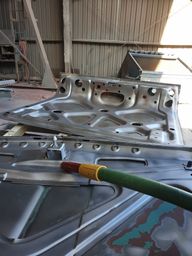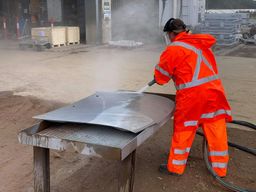Abrasive blasting is generally used to prepare materials for their subsequent finishes.
Existing surfaces are removed (mill scale, rust, paint etc) and a surface profile is formed giving the steel a key for another product to adhere too.
It is very important that the surface profile is correct to provide the necessary anchor to achieve the durability of the subsequent finishes.
The most used blast mediums are garnet a naturally occurring completely inert material that is imported for the purpose. Steel shot/Grit, Garnet, Glass Bead
Steel Shot/Grit
Steel Shot is finely crushed ball bearings which is solely used in our blast booth.
We have one of the largest booths in New Zealand.
Garnet
Garnet is a blasting media sourced from Australia free from silica and iron particles, therefore being much more environmentally friendly and does not impact human health.
We used garnet in our sand bay and for on site blasting.
Glass Bead
Glass Bead is used on delicate items such as car doors for restoration and sculptures.
It gives a much finer surface finish.
Vapor
Vapor blasting is also commonly known as wet blasting, dustless blasting, or slurry blasting.
Abrasive media is mixed with water and pressurized in a pressure pot before being propelled through a blast nozzle and mixed with compressed air.
The biggest advantage of wet blasting is it produces a finer finish on a surface than traditional dry blasting. The water flushes out the abrasive, so there is no impregnation of the blasted surface. Any sediment or residual abrasive media is washed out. This leaves a cleaner surface.
Because of regulations on airborne dust, there are many times when wet blasting is the best choice. The water suppresses most of the dust caused by outdoor abrasive blasting, so dust containment is less of an issue.
